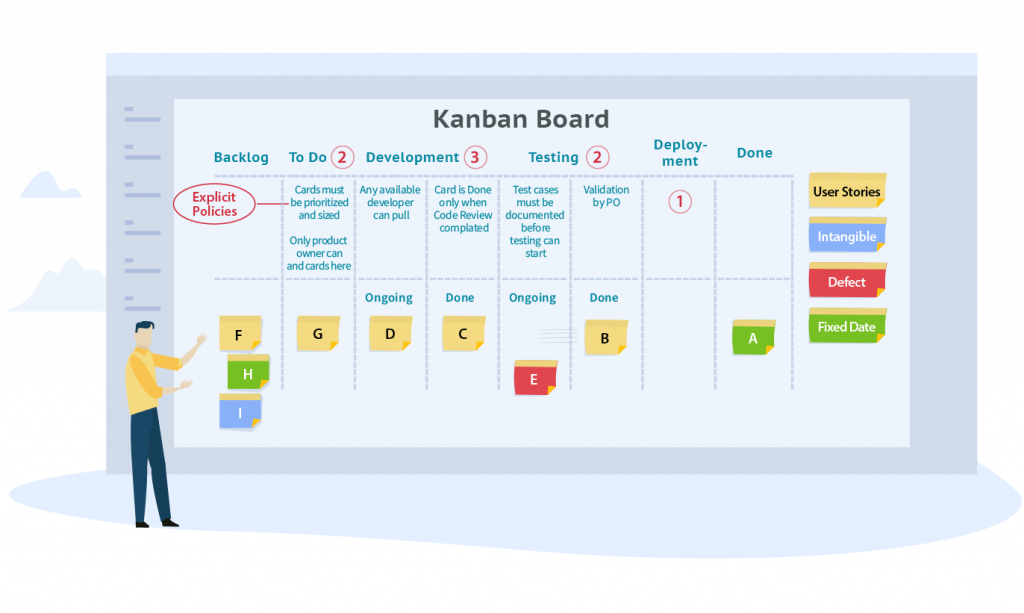Agile Kanban Overview
What is Kanban?
Kanban is an Agile-based visual workflow management method that helps teams visualize their work, limit work-in-progress (WIP), and improve efficiency.
- Work is shown on a Kanban board using cards (for tasks) and columns (for stages).
- The goal is to move tasks smoothly through stages like To Do → In Progress → Done.
- Kanban is about continuous delivery — not working in sprints, but delivering work as it’s ready.
Example: Imagine a team at SLSI Corp developing a new feature. They use a Kanban board with columns like "To Do," "In Progress," and "Done." Each task is represented by a card that moves across these columns as work progresses.
Kanban Board Components -
A typical Kanban board includes:
- Columns: Represent different stages of the workflow (e.g., "To Do," "In Progress," "Done").
- Cards: Visual representations of individual tasks or work items.
- Swimlanes: Horizontal rows that categorize tasks (e.g., by team, priority, or project).
- WIP Limits: Constraints on the number of tasks in a column to prevent bottlenecks.
Example: The SLSI Corp team uses swimlanes to separate tasks for different features. This helps them track progress across multiple initiatives simultaneously.
How Kanban Works?
Kanban operates on a pull system, where new work is pulled into the workflow only when there's capacity. This contrasts with push systems, where work is assigned regardless of capacity. By limiting WIP and visualizing tasks, teams can identify and address bottlenecks effectively.
Example: When a developer at SLSI Corp finishes a task, they pull the next highest-priority task from the "To Do" column, ensuring a smooth and manageable workflow.
Kanban Principles
David J. Anderson has formulated the Kanban method as an approach to incremental and evolutionary process. It is focused on getting things done.
The four core principles of Kanban
- Start with what you are doing now - The Kanban Method highlights the importance of not immediately changing your existing setup or processes. Instead, it suggests applying Kanban directly to your current workflow. Any necessary changes should occur gradually, allowing the team to adjust at a comfortable pace.
- Agree to pursue incremental, evolutionary change - Kanban would encourage you to make small changes rather than complete changes that might lead to resistance within the team and organization.
- Initially, respect current roles, responsibilities, and job titles - Kanban itself does not force any organizational changes. It is not necessary to alter existing roles and functions that are performing effectively. The team will collaboratively identify and implement any required changes.
- Encourage acts of leadership at all levels - Kanban encourages continuous improvement across all organizational levels, emphasizing that leadership can come from employees at any rank, not just senior managers. Individuals throughout the organization can contribute ideas and demonstrate leadership in implementing changes that enhance the delivery of products and services.
Kanban Boards -
A Kanban Board is a visual tool used to track the status of work. It shows columns (work stages) and cards (work items). While some teams prefer physical boards, virtual boards are a key feature in agile software development tools.

Whether it's a physical or virtual board, the primary purpose is to visualize the team's work, standardize the workflow, and promptly identify and resolve any blockers or dependencies. A basic Kanban board consists of a three-step workflow:
- To do
- In Progress
- Done
